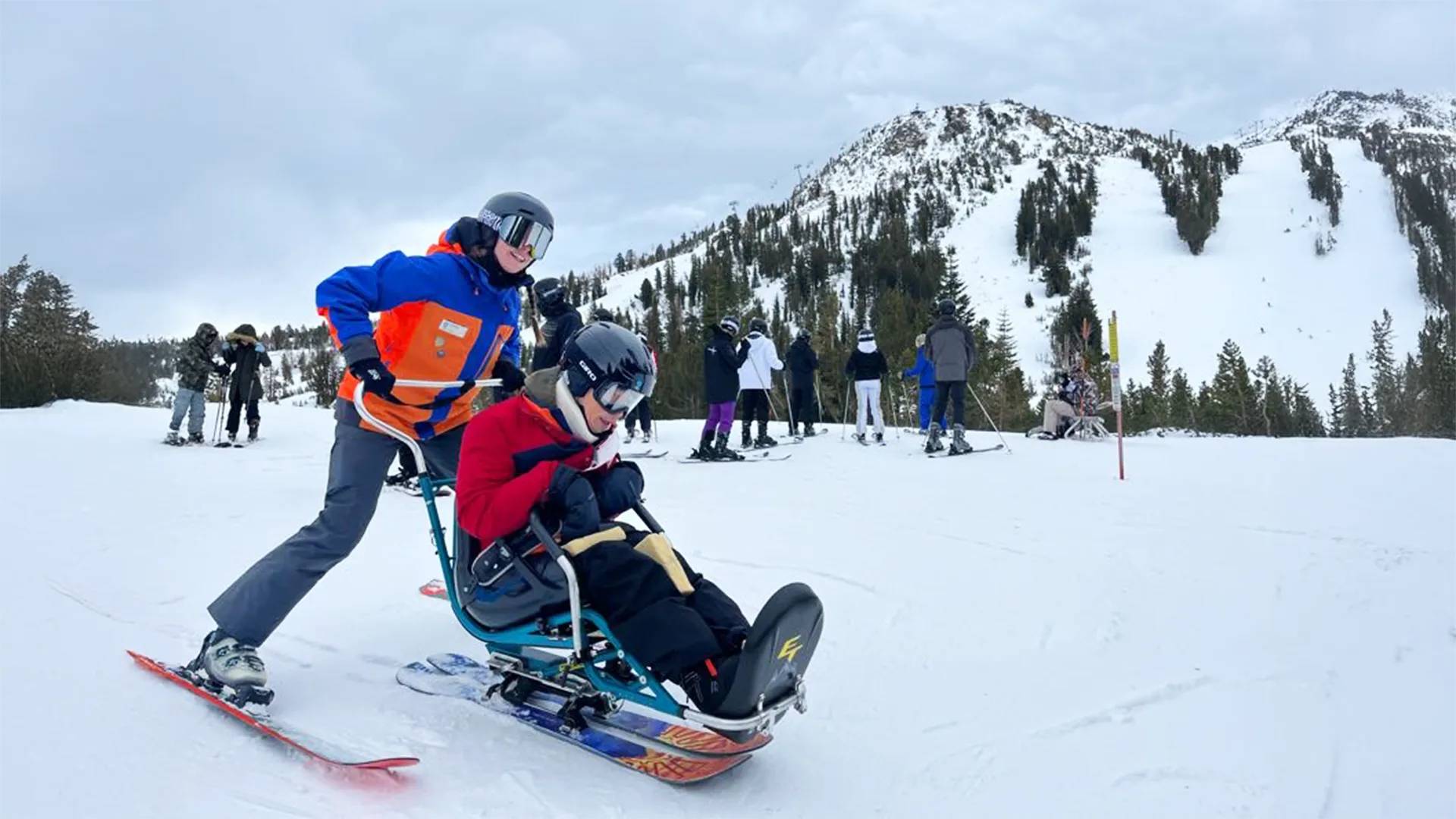Safety & Sport Protection at Access Mammoth
Access Mammoth is committed to creating a safe, supportive, and inclusive environment for all athletes. As a proud member of Move United, we uphold the highest standards for abuse prevention, safe sport education, and athlete protection.
Our Sport Protection Handbook outlines our policies on athlete safety, background screening, misconduct prevention, and our responsibilities under the SafeSport Reauthorization Act.
Access Mammoth’s Essential Eligibility Criteria (EEC)
Overall EEC’s
- If the athlete has had a traumatic injury or surgery in the past year, they must provide a doctor’s release before participation will be permitted.
- For participants with Down Syndrome, the participant must have been examined by a physician for Neurologic Symptoms of Atlantoaxial Instability, found the symptoms to be absent, and has been cleared to participate in high-risk sports.
- Be safely outside for a minimum of two hours in variable weather conditions ranging from sun and heat to rain and cold.
- Be able to transfer independently, with the assistance of an accompanying caregiver/family member, or with help from a staff/volunteer instructor.
- Be able to attend to all self-care needs, including but not limited to appropriate hydration and nutrition, toileting, medications, and sunscreen, independently or with the assistance of an accompanying caregiver/family member.
Additionally, please review the sport-specific essential eligibility criteria listed below.
Biking
- Be able to wear a helmet for the duration of the cycling experience
- Provide their own bike in safe operating condition OR use appropriate Adventure Center or DSES rental equipment as available.
- If riding independently, athlete must be able to reliably follow directions including stop, slow down, and turn.
Hiking/Adventure Center
- If hiking independently, the athlete must be able to reliably follow directions, including stop, slow down, and turn.
Paddling
- Be able to wear a PFD appropriately fitted for the duration of time on the water.
- Be able to turn face up from a face down position in the water independently while wearing a PFD.
Skiing and Snowboarding
- A sit-down skier’s weight limit is 180lbs. Exceptions will be considered if the participant is strong enough to transfer independently and down/up about 12”.
- Be able to wear a helmet and eye protection (glasses, visor, etc.) for the duration of the lesson experience.
- Be willing to ride a chairlift with at least one instructor from a different household.
Nordic Skiing and Snowshoeing
- A sit-down skier’s weight limit is 190lbs. Exceptions will be considered if the participant is strong enough to transfer independently and down and up about 12”.
